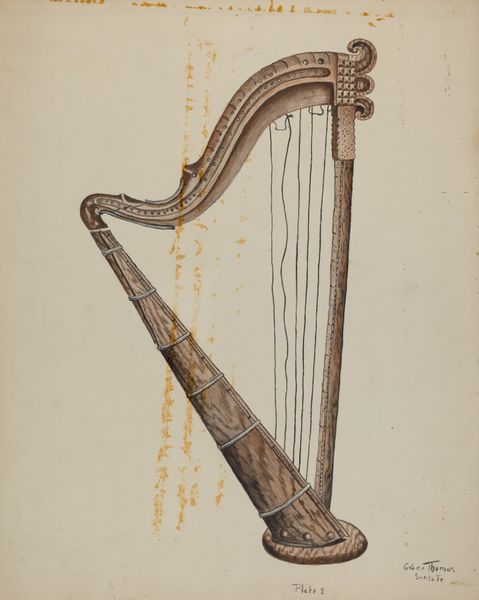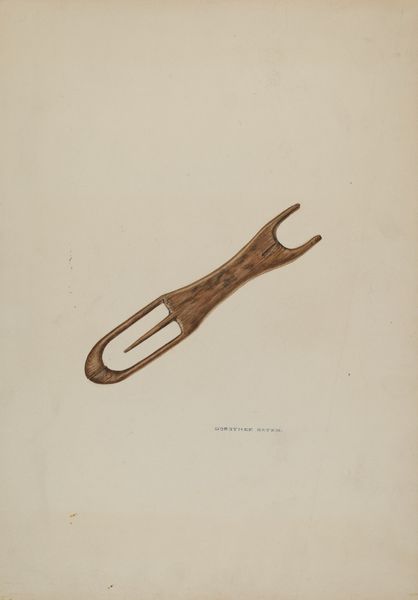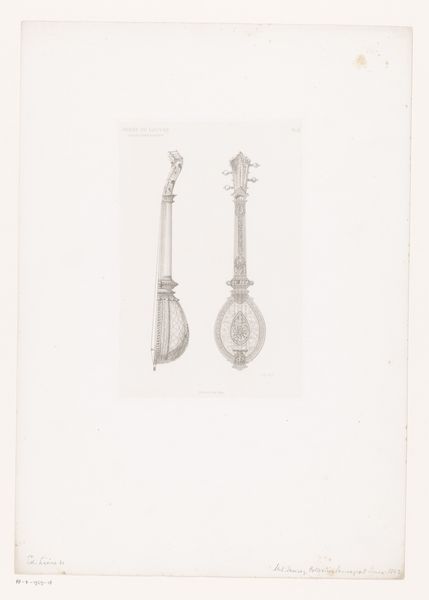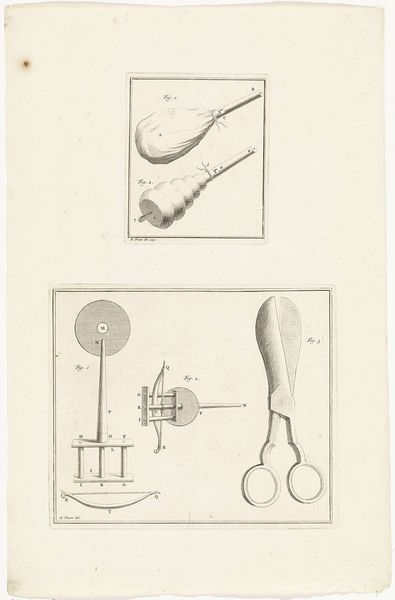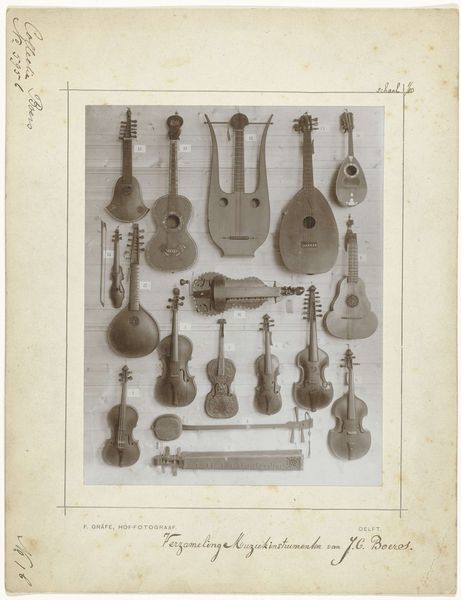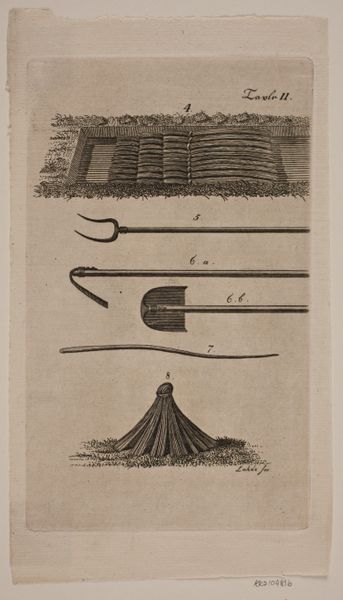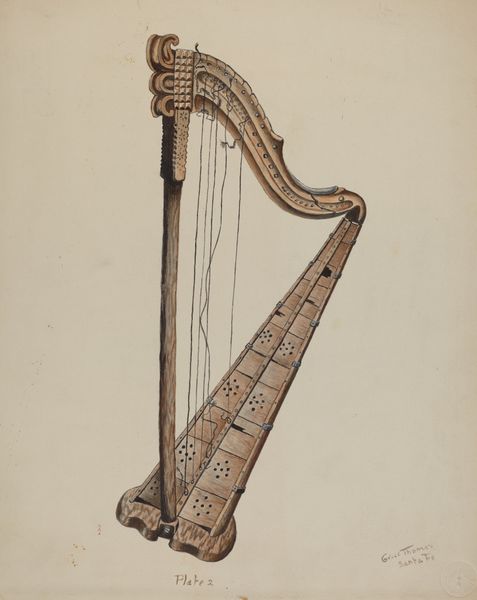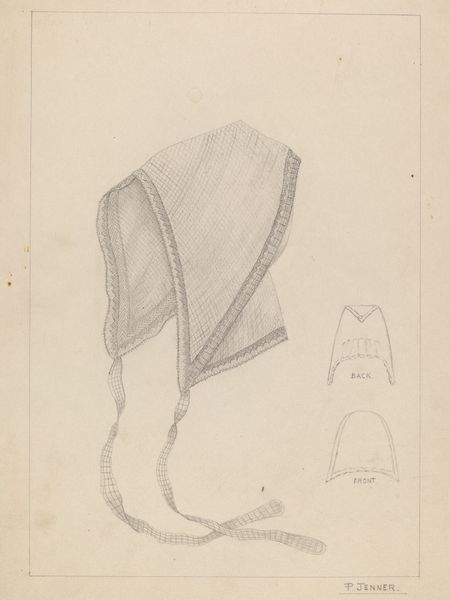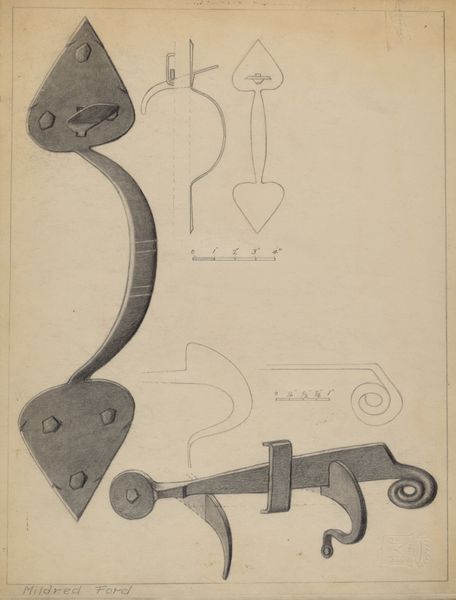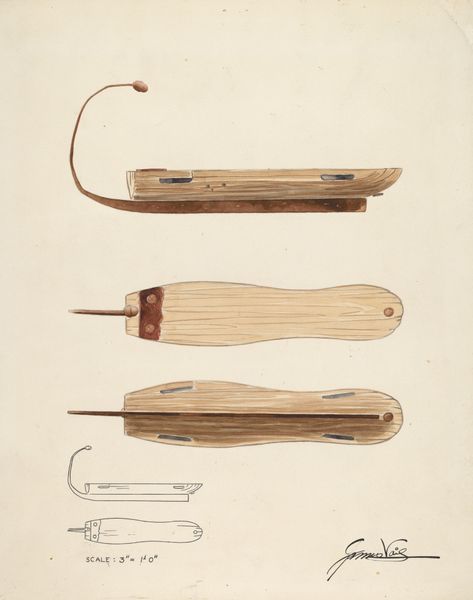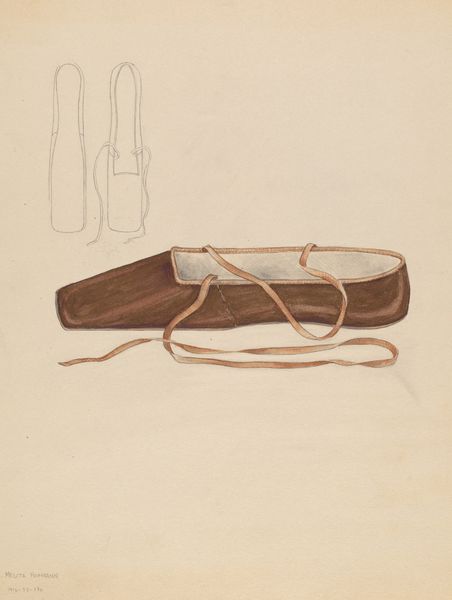
graphic-art, print, engraving
#
graphic-art
# print
#
geometric
#
line
#
history-painting
#
engraving
Dimensions: height 324 mm, width 210 mm
Copyright: Rijks Museum: Open Domain
Curator: Looking at this print, it immediately brings to mind the silent elegance of scholarly pursuits. What's your take? Editor: The shapes all seem to echo the forms found in nature – from the curve of the "Cor ou Oliphant" to the lute’s rounded body. The engraving lends a somewhat austere charm, yet it teases with the idea of sound. Let’s delve in. Curator: This engraving by Jacques Louis Pérée, created sometime between 1795 and 1869, showcases musical instruments supposedly from the early 16th century, as noted by its title. I find it curious how the print presents these artifacts as relics. What readings can we provide for our audience? Editor: Consider how each instrument projects culturally ingrained images. The "Orgue portatif", or small organ, speaks of learned traditions within established churches. The flute and lute, on the other hand, carry folk melodies through centuries of oral and artistic traditions. Together, these objects form a landscape of early musical expressions. Curator: Yes, it seems the print tries to categorize different types of musical engagement within early European societies, the "high" church traditions versus secular, more communal forms. It’s fascinating how even the visual representation reinforces this cultural hierarchy. Editor: And the material itself adds a layer of significance, I think. Prints like this often functioned as educational tools, accessible across classes. It presents a sort of democratizing effect through the reproduction and dissemination of knowledge. Curator: Exactly! It is fascinating to see this piece within the framework of how knowledge and cultural appreciation were distributed, making music a subject of wider social discourse. Well, a sharp look and some sharp discussion! Editor: Indeed. It's quite compelling to visualize the harmony—and perhaps disharmony—that those early musical traditions might represent across various strata of society, each reverberating through history into our current museum context.
Comments
No comments
Be the first to comment and join the conversation on the ultimate creative platform.

